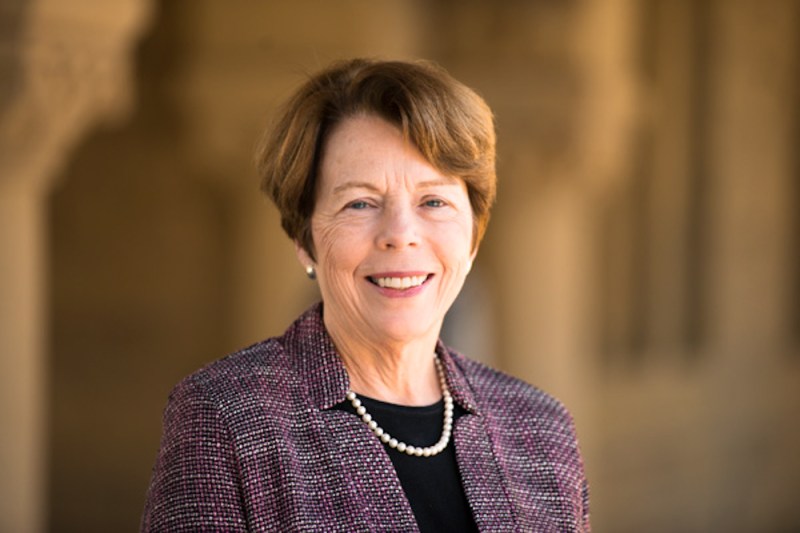Ann Arvin, vice provost and dean of research, addressed the problem of research integrity in last month’s faculty senate meeting following a report titled “How Science Goes Wrong” published in The Economist.

The Daily sat down with Arvin to talk about her opinion on the research integrity at Stanford.
The Stanford Daily (TSD): What are the leading problems associated with research integrity here at Stanford?
Ann Arvin (AA): Well, everybody wants to protect the integrity of research, because it is the public record of research. So…I don’t think we have any leading problems. It’s just, what are our goals? And how do we accomplish them? We don’t have a particular set of problems at Stanford. This is just the general effort of anyone who is engaged in research and scholarship to make sure—to the extent possible—that the work is not biased, and is done according to the standards of the disciplines.
TSD: The Economist recently published an article entitled “How Science Goes Wrong.” In that article, the authors suggested that the pressure to publish cutting-edge research is undermining the integrity of academic research in general worldwide. What are your thoughts about it?
AA: In my view, The Economist stated what should be a hypothesis as a conclusion. But that is certainly one of the challenges, that researchers are expected to have major new findings in order to get published and to get grant funding. That might cause someone not to pay attention to the full data set, or not to use their best judgment. Doing science is always about judgment. But there is no evidence indicating that research misconduct has increased. Still, you could say that we have concerns that these pressures are real, and perhaps there are ways we can mitigate those pressures, which might lead to problems with research integrity.
TSD: Is research misconduct a problem at Stanford today, in your opinion?
AA: Maintaining research integrity is always an issue. We do not have a particular problem with research misconduct. We are, as we hope, vigilant, and by that I mean people who are engaged in research need to be questioning each other: “Are you sure that result is right?” That’s not a confrontation of your colleague—it’s trying to promote the best quality research. So we want to maintain that idea of careful scrutiny within lab groups and across lab groups to ask questions of colleagues.
And we also want to make sure that when somebody really feels that there is something inappropriate going on, that they will in fact have a way to come forward, and that there aren’t barriers to doing that. So our policy explains that people should go to their school deans, but if they’re not comfortable with doing that—which you can easily imagine someone would not be—then there are the approaches through the ombudsperson and ways to come forward confidentially. But it’s also really important to understand that making an allegation of research misconduct—as you can read about in the research policy handbook—is a very serious allegation, and it has to do with alleging that you have observed fabrication, falsification or plagiarism.
TSD: What are the consequences for those found to have engaged in research misconduct at Stanford?
AA: Well, there have been vanishingly few. And so, the fact is the consequences depend on the circumstance. In the faculty handbook, there is a section on faculty discipline. And so, it is more a process. It is not, “If you do such and such, we will do such and such.” It is a process of evaluation and decision about these particular circumstances and what’s appropriate. We do not have a sort of criminal proceeding where “this is a misdemeanor or this is a felony” or whatever. That’s not how it works.
TSD: What recommendations do you have for the University to promote research integrity going forward?
AA: What we’re doing is what we need to be doing, which is maintaining making sure people are aware, not only of the definition, but also how to proceed if there are concerns. I think we would like our faculty to be engaged in their own disciplines. There are usually associations or societies that are doing [national work—like the American Physical Society, for example. Most of those organizations have some activities that are talking about how to really define the standards of best practices within their fields. You can easily imagine they’re not exactly parallel. It depends on what your tools are and what your discipline is. So we would like faculty to participate in those discussions.
TSD: What role can students play in ensuring that academic integrity is preserved here at Stanford?
AA: Well, I think they need to be as aware as other people about what the definition is and what the process is if they have a concern. It’s a community effort to make sure that the conversations happen. And it’s important to have students engaged in that too. Students are actively involved in research here. It’s part of what I hope they will be learning.
Contact Sam Kurland at kurlands ‘at ’stanford.edu.
